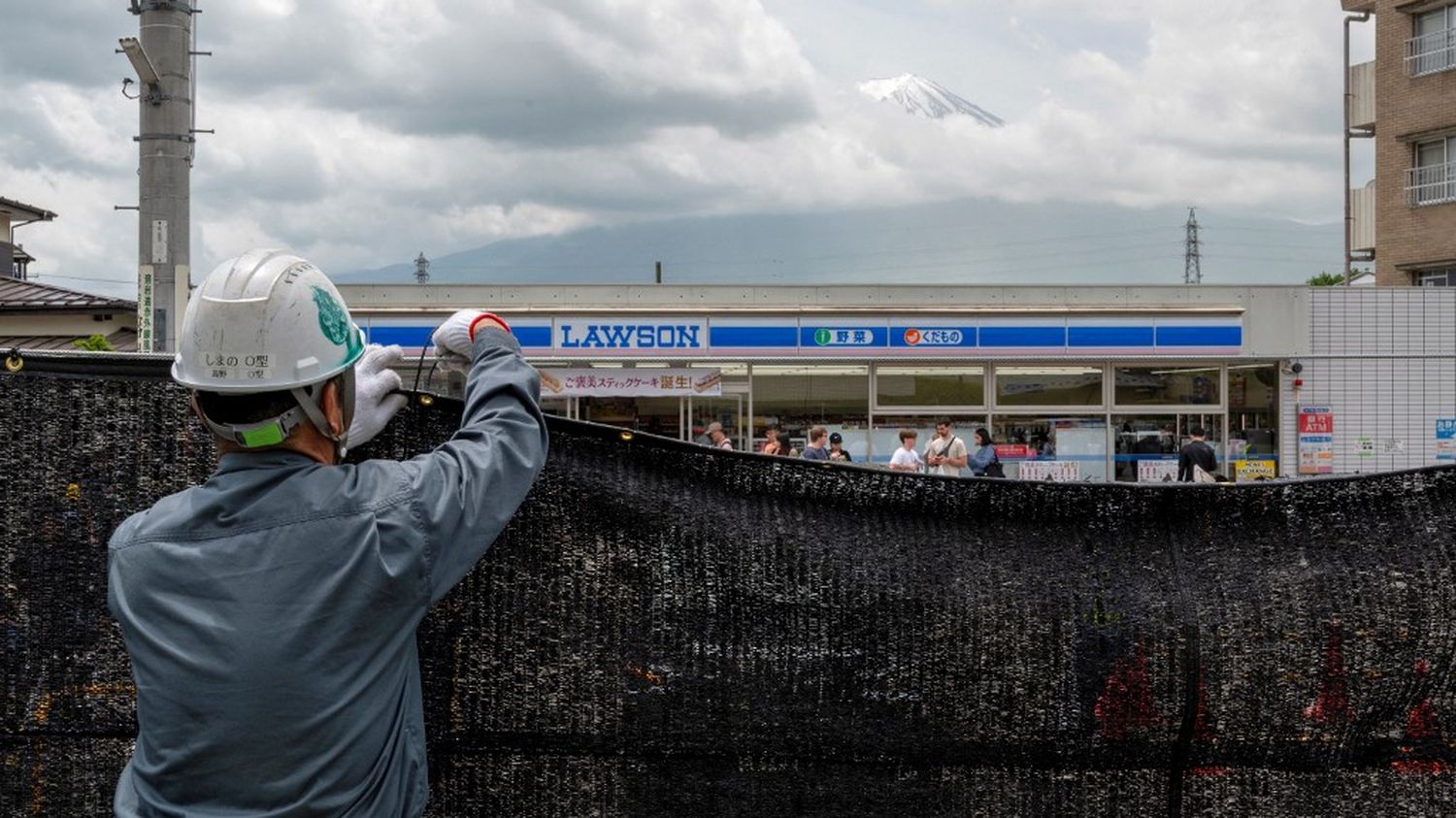The city, which plans to remove the barrier when the location becomes less popular, now wants to place QR codes on the barrier to showcase other tourist attractions in the area, including other places to take photos of Mount Fuji

Published
Update
Reading time: 1 min

The Japanese city having erected a tarpaulin to hide a view of Mount Fuji popular with tourists who sometimes do not respect the rules, declared on Tuesday that around ten small holes had already been drilled in the canvas.
The barrier was installed last week at a popular social media spot in the town of Fujikawaguchiko, where residents have complained about streams of visitors leaving trash on the ground, smoking outside permitted areas, crossing at red lights or parking anyhow.
Some even climbed onto the roof of a dental clinic so they could take better photos. “It’s a question of behavior. It’s a shame“, a city official regretted to AFP, referring to the holes.
The municipality hired a security guard between 10 a.m. and 4 p.m., but the holes were apparently drilled in the morning or evening when no one was watching, he explained.
For this same manager, the screen still achieved its objective: to reduce the crowds on the narrow sidewalk facing a very popular view on social networks, because it combines the majestic volcano with a convenience store in the foreground, a symbol of contemporary Japan.
Since the 2.5 meter high by 20 meter long net was installed, “there are people who came to see this screen. But we achieved our goal: to discourage people from staying put.“, he added. Japan is welcoming a record number of foreign tourists, with the number of monthly visitors surpassing three million for the first time in March, and again in April.
But like other tourist hotspots, such as Venice which recently introduced entry fees for day visitors, overtourism is difficult to manage.
Access to a hiking trail to climb Mount Fuji from July to September will now be paid (around 12 euros) and limited to 4,000 people per day. And in the former imperial capital Kyoto (west), some alleys in the geisha district have been closed to the public since last month.
